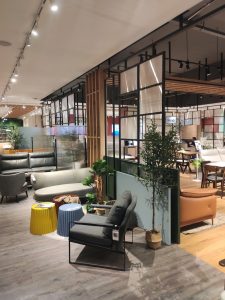You’ve probably never considered why your neighbor’s burnt orange sofa feels so intentional, or why that millennial couple downstairs chose forest green dining chairs for their 900-square-foot HDB flat. Research reveals that Singaporeans’ furniture color choices aren’t random aesthetic decisions—they’re calculated psychological moves rooted in cultural identity, social positioning, and spatial psychology. These color preferences expose deeper truths about how you navigate tradition, express status, and cope with urban living constraints in ways that might surprise you.
The Bold Color Revolution in HDB Flats and Condominiums
While Singapore’s housing landscape was once dominated by neutral beiges and whites, a striking transformation has emerged across HDB flats and condominiums as residents increasingly embrace vibrant furniture colors to express their personalities and cultural identities. You’ll notice millennials and Gen Z homeowners gravitating toward jewel-toned sofas, emerald dining sets, and coral accent chairs. This shift reflects Singapore’s multicultural heritage, where Peranakan-inspired turquoise and traditional Chinese red influence contemporary home furniture choices. You’re witnessing a psychological rebellion against conformity, as bold colors provide emotional stimulation and create distinctive living spaces that reflect individual identity within standardized housing structures.

Cultural Heritage Meets Modern Expression Through Furniture Hues
As Singapore’s diverse cultural tapestry weaves itself into contemporary interior design, you’re witnessing furniture choices that bridge ancestral traditions with cutting-edge aesthetics. You’ll notice Peranakan families incorporating jade greens and vermillion reds into sleek modular sofas, while Chinese households blend auspicious gold accents with minimalist Scandinavian pieces. Malay homes feature warm earth tones reminiscent of traditional kampong living, yet expressed through contemporary geometric patterns. Indian families choose rich burgundies and saffron yellows in modern furniture silhouettes. You’re creating spaces where heritage colors honor your ancestry while serving today’s lifestyle demands, proving cultural identity strengthens rather than constrains modern expression.
Status Signaling and Identity Formation in Singapore’s Color Choices
Beyond expressing cultural heritage, your furniture color selections actively communicate social positioning and personal identity within Singapore’s stratified society. You’ll notice affluent households favor muted luxury tones—charcoal grays, deep navy, champagne gold—signaling sophisticated restraint over flashy displays. These choices reflect Singapore’s cultural preference for understated wealth expression, influenced by Confucian values emphasizing modesty.
Your color decisions also establish generational identity markers. Millennials gravitate toward bold jewel tones and mixed palettes, rejecting their parents’ conservative beiges and browns. Meanwhile, you’re unconsciously participating in neighborhood social hierarchies, where certain color combinations become informal status indicators within specific residential enclaves.
Breaking Design Rules: Why Dark Colors Thrive in Small Spaces
Despite conventional wisdom warning against dark colors in cramped quarters, Singapore’s compact living spaces actually benefit from deeper hues that create psychological depth and visual sophistication. You’ll find that dark furniture eliminates visual boundaries, making rooms appear larger than their actual dimensions. Research shows darker tones reduce cognitive load by minimizing distracting reflections common in Singapore’s bright tropical light. Your brain processes unified dark surfaces as continuous space rather than fragmented areas. Cultural preferences also play a role—many Singaporeans associate dark woods with quality craftsmanship, making small spaces feel more luxurious rather than cramped or confined.
